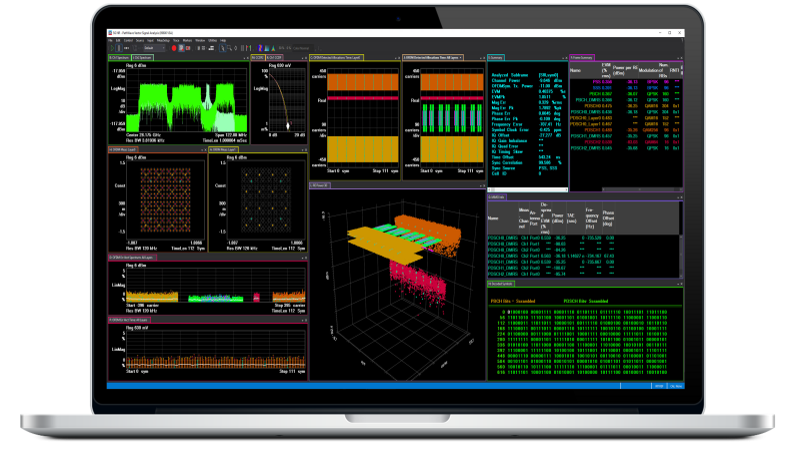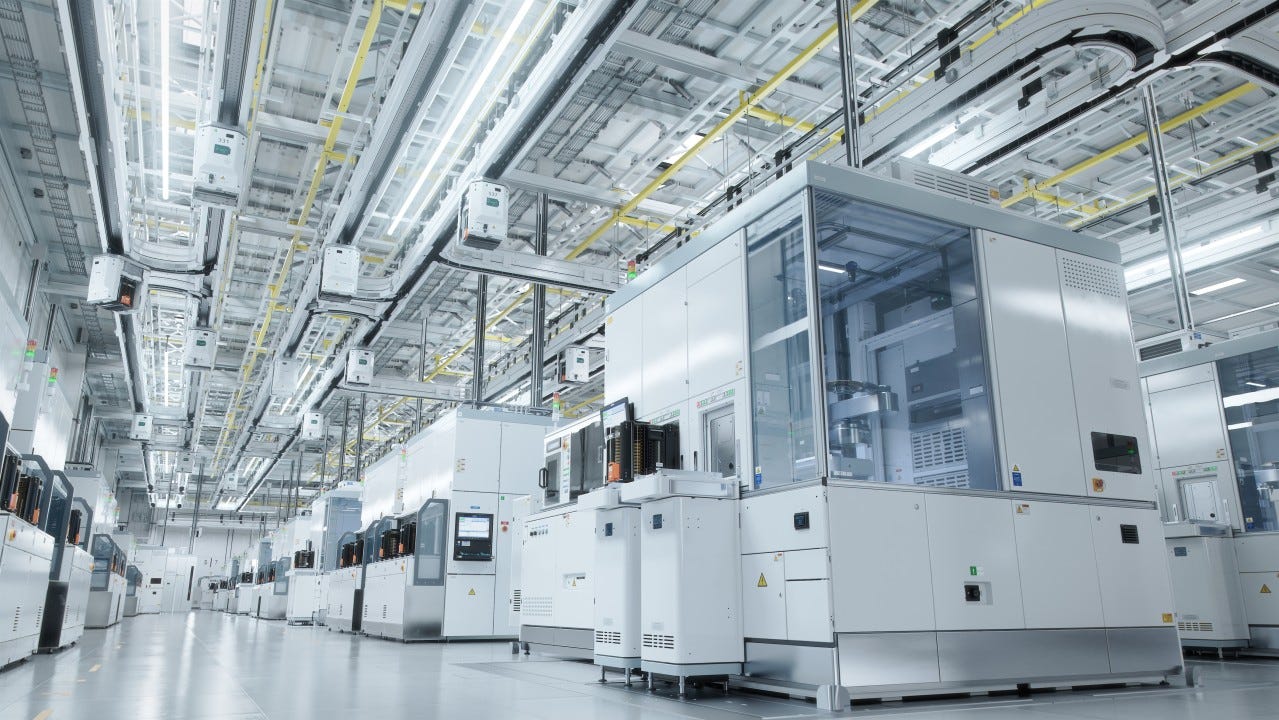Silicon Wars: The Hidden Battlefield Reshaping Global Finance in 2025
How the Journey from Sand to Chip is Silently Transforming Investment Landscapes Across All Asset Classes
The global economy runs on silicon—not the palm-lined streets of Silicon Valley, but the actual element that powers everything from the smartphone in your pocket to the sophisticated trading algorithms executing millions of transactions per second. As geopolitical tensions rise and supply chains face unprecedented strain, the journey from simple sand to sophisticated semiconductor has become more than a manufacturing marvel—it's become a financial battleground with implications across every asset class imaginable. This is Part 3 of our semiconductor industry primer series, where we continue to demystify this critical sector for investors seeking to navigate its complexities. For Parts 1 and 2 of this series, please visit:
Semiconductors A-Z: Order of Posts
Semiconductors are the invisible foundation of the modern world. From powering smartphones and laptops to enabling artificial intelligence, electric vehicles, and national defense systems, these tiny silicon-based components have quietly become the most strategically valuable resources of the 21st century. Yet despite their importance, the semiconductor…
Our previous installments laid the groundwork for understanding semiconductor fundamentals. Now, we'll trace the remarkable transformation of one of earth's most common elements into the world's most valuable technology products, examine the intricate global supply chain that makes it possible, and explore how these realities create both risks and opportunities across multiple asset classes.
From Beach Sand to Electronic Brain: Silicon's Remarkable Journey
The path from ordinary silica to functioning semiconductor begins with one of earth's most abundant resources. Silicon dioxide (SiO₂), commonly known as silica, constitutes approximately 60% of the earth's crust and is readily found in quartz and beach sand. Despite this abundance, the journey to electronic-grade silicon involves complex refining processes that dramatically increase its value at each step.
The transformation begins with the reduction of silica, removing oxygen through a reaction with carbon at temperatures reaching 1500-2000°C in electrode arc furnaces. This intense process yields metallurgical grade silicon (MG-Si), which is about 98% pure and widely used in metallurgical applications. While this might seem impressively pure, it remains woefully inadequate for semiconductor applications, where even tiny impurities can render a chip useless.
The real magic happens in the second stage of refinement, where metallurgical silicon undergoes additional purification to create electronic-grade silicon with impurity levels measured in parts per billion. This ultra-pure silicon forms the foundation of the semiconductor industry, yet represents just the first step in a long manufacturing journey. What's particularly striking is the economic transformation: raw silica costs mere cents per kilogram, while the finished electronic-grade silicon wafers command hundreds or even thousands of dollars per kilogram—a value multiplier that continues through each subsequent manufacturing phase.
The Invisible Architects: Design, Fabrication, Packaging, and Testing
Once purified silicon is available, the process of creating functioning semiconductors involves four distinct yet interconnected phases: design, fabrication, packaging, and testing. Each phase requires specialized expertise and equipment, creating a segmented value chain that spans continents.
Design: The Digital Blueprint
Modern semiconductor design relies heavily on Electronic Design Automation (EDA) tools—sophisticated software suites that enable engineers to create and simulate complex chips before physical manufacturing begins. This market has seen significant growth, with artificial intelligence and machine learning revolutionizing design processes. AI-driven EDA tools can now predict potential issues and optimize design efficiency, significantly reducing time-to-market and costs.
The rising complexity of semiconductor designs has driven innovation in verification methods, with automated design and verification tools becoming increasingly important as manual methods become impractical for today's sophisticated chips. These tools ensure functional integrity across billions of transistors while optimizing for performance, power consumption, and manufacturing yield.
Fabrication: Silicon Transformation
Fabrication occurs in specialized facilities called "fabs" or "foundries," where the purified silicon wafers are transformed into functioning circuits through hundreds of precisely controlled steps. This segment of the industry has become highly concentrated, with Taiwan Semiconductor Manufacturing Company (TSMC) commanding a staggering 62% of global foundry revenue as of 2024, highlighting both Taiwan's strategic importance and the market's consolidation.
The capital-intensive nature of foundry operations—with modern facilities costing upwards of $20 billion—has created significant barriers to entry and reinforced the dominance of established players. This concentration presents both investment opportunities and systemic risks that reverberate throughout global markets.
Packaging and Testing: Bringing Chips to Life
Once fabricated, semiconductor dies undergo packaging—a process that provides physical protection, manages heat dissipation, and enables electrical connections between the chip and external systems. Key techniques include wire bonding (using thin wires to connect chip pads to external pins), flip-chip bonding (directly connecting solder bumps on the chip to the substrate), and system-in-package (combining multiple components into a single package).
Testing represents the final quality control step, validating functionality and reliability before chips ship to customers. This crucial phase ensures compliance with stringent quality standards and identifies defects that could lead to failures in the field. The specialized equipment required for testing represents another segment of the semiconductor supply chain with its own investment considerations.
The Sovereign Stakes: Key Players Controlling the Digital Future
The semiconductor industry's strategic importance has elevated certain companies and countries to positions of extraordinary influence in the global economy. Understanding these key players is essential for investors navigating the sector's complex dynamics.
Taiwan stands as the undisputed manufacturing powerhouse, with TSMC alone commanding 62% of global foundry revenue. When combined with other Taiwanese companies like UMC, VIS, and PSMC, the island's total market share exceeds 70%—an astonishing concentration of critical infrastructure within a geopolitically sensitive region.
South Korea follows as a distant second, with Samsung accounting for 10% of the foundry market while also maintaining significant positions in memory chips and display technologies. The United States contributes primarily through GlobalFoundries (6% market share) and design leaders like Nvidia, AMD, and Intel, while China's SMIC represents 5% of the foundry market despite facing significant export controls from Western nations.
Beyond pure-play semiconductor companies, the industry relies on specialized equipment manufacturers like ASML (which holds a monopoly on the advanced lithography machines required for cutting-edge chips) and design tool providers like Cadence and Synopsys. These "pick and shovel" businesses often offer attractive investment characteristics with more stable revenue streams than the cyclical chip manufacturers themselves.
A Chain of 25,000 Miles: Supply Complexity and Geographic Spread
The semiconductor supply chain stands among the most complex and globally distributed manufacturing networks ever created. A single chip may cross international borders more than 70 times during production, traveling approximately 25,000 miles through various production stages. This intricate network spans raw material extraction, chemical processing, specialized equipment manufacturing, wafer fabrication, packaging, and testing—each step often occurring in different countries.
This geographic dispersion creates both efficiencies and vulnerabilities. The industry has optimized for cost and technical expertise, concentrating specific capabilities in regions like Taiwan (advanced manufacturing), Japan (materials and chemicals), the Netherlands (lithography equipment), and the United States (design). However, this optimization has created critical dependencies that present systemic risks to the global economy.
The complexity presents formidable challenges even to industry insiders, with 81% of semiconductor executives admitting that a lack of data, knowledge, and understanding poses significant obstacles to addressing supply chain risks. This information asymmetry creates both risks and opportunities for informed investors.
Multi-Asset Implications: Investment Frontiers in the Semiconductor Ecosystem
The semiconductor supply chain's strategic importance, geographic concentration, and technological complexity create distinctive investment implications across multiple asset classes. Let's examine how different investment vehicles are affected by and provide exposure to this critical industry.
Equities and ETFs: Geographic Concentrations Matter

The extreme concentration of semiconductor manufacturing capacity in Taiwan creates unique equity market dynamics. Taiwan-focused ETFs effectively serve as leveraged bets on the semiconductor industry, with TSMC often representing over 20% of total holdings in broad Taiwan equity indices. South Korean equity exposure similarly provides indirect semiconductor exposure through Samsung and SK Hynix.
For investors seeking more targeted exposure, specialized semiconductor ETFs offer portfolios spanning the supply chain from equipment manufacturers to chip designers. However, these often underweight the manufacturing segment due to the limited number of pure-play foundry companies available to investors.
The industry's segmentation also creates opportunities for thematic investments focusing on specific parts of the value chain. Equipment manufacturers like ASML, Applied Materials, and Lam Research offer exposure to capital expenditure cycles, while EDA providers like Cadence and Synopsys provide more stable revenue streams tied to ongoing design activity rather than manufacturing volumes.
Fixed Income: Sovereign and Corporate Considerations
The strategic importance of semiconductor manufacturing has implications for sovereign debt markets, particularly for Taiwan, South Korea, and increasingly, countries investing heavily in reshoring initiatives. National security concerns are driving massive government subsidies for domestic semiconductor production in the United States, European Union, Japan, and China, creating new fixed income opportunities through both sovereign and corporate debt issuance.
Corporate bonds from semiconductor companies present distinctive characteristics, with foundry operators typically carrying stronger balance sheets due to their capital-intensive business models requiring access to debt markets. The industry's cyclicality creates natural entry points for fixed income investors during downturns when yields typically expand.
Currencies: The Silicon Factor

Currency markets increasingly reflect semiconductor supply chain dynamics, with the New Taiwan Dollar (TWD) and Korean Won (KRW) showing sensitivity to semiconductor cycle trends. The TWD in particular has developed a correlation with semiconductor equipment orders and foundry utilization rates that savvy currency traders monitor closely.
The massive capital expenditures required for new manufacturing facilities also drive significant currency flows when new fabs are announced, creating short-term trading opportunities and longer-term currency appreciation pressures for countries receiving investment.
Real Estate and Infrastructure: The Physical Foundations
Semiconductor manufacturing requires specialized real estate with extraordinary specifications for power delivery, water access, vibration control, and clean room environments. Industrial REITs with exposure to semiconductor manufacturing clusters in places like Hsinchu (Taiwan), Pyeongtaek (South Korea), Phoenix (USA), and Dresden (Germany) offer indirect exposure to industry growth.
The infrastructure supporting semiconductor manufacturing—including power generation, water treatment, and specialized industrial gases—represents another investment avenue. A single advanced semiconductor fab can consume as much electricity as a small city and require millions of gallons of ultra-pure water daily, creating demands for supporting infrastructure investment that often precedes facility construction.
Alternative Investments: Supply Chain Risk and Private Opportunities
The concentration of critical manufacturing capacity in geopolitically sensitive regions has created a market for insurance-linked securities focused on supply chain disruption. These instruments, which effectively transfer supply chain risk from semiconductor companies and their customers to capital markets, represent an emerging alternative asset class with limited correlation to traditional markets.
Private equity and venture capital opportunities abound throughout the semiconductor ecosystem, from materials science startups developing next-generation substrates to specialized design firms creating chips for artificial intelligence applications. The long development cycles and capital intensity of semiconductor innovation align well with patient private capital timeframes.
Conclusion: Navigating the Silicon Battleground
The journey from beach sand to sophisticated semiconductor illustrates not just a manufacturing miracle but a complex global ecosystem with profound investment implications. As geopolitical competition intensifies and digitalization accelerates, understanding the semiconductor supply chain becomes essential for investors across all asset classes.
The extreme concentration of manufacturing capacity creates both systematic risks and targeted opportunities. Geographic diversification—through carefully selected equity, fixed income, currency, real estate, and alternative investments—can help investors balance exposure while capitalizing on the industry's continued growth.
As governments worldwide recognize semiconductors as critical infrastructure and pour hundreds of billions into domestic capacity, new investment landscapes are emerging that will reshape capital flows for decades to come. For the informed investor, these silicon wars offer not just risks to mitigate but opportunities to capture as the digital backbone of the global economy continues its expansion.
In our next installment, we'll explore how semiconductor demand drivers—from artificial intelligence to autonomous vehicles—are creating new market dynamics and investment considerations across the technology ecosystem. Stay tuned as our semiconductor primer series continues to provide the knowledge foundation for navigating this essential industry.
Sources
https://www.pveducation.org/pvcdrom/manufacturing-si-cells/refining-silicon
https://www.linkedin.com/pulse/electronic-design-automation-eda-semiconductor-chips-f7vqe/
https://www.visualcapitalist.com/ranked-semiconductor-foundries-by-revenue-share/
https://www.topbots.com/semiconductor-supply-chain-overview/
https://www.theverge.com/24166234/chips-act-funding-semiconductor-companies
https://www.institutdesactuaires.com/docs/2013091181358_SwissReInsurancelinkedsecurities.pdf
https://semiwiki.com/forum/threads/how-to-build-a-20-billion-semiconductor-fab.20155/
https://www.databridgemarketresearch.com/reports/global-cleanroom-technology-market
https://www.waferworld.com/post/how-is-raw-silicon-processed-and-manufactured
https://www.civilsdaily.com/news/how-are-semiconductors-fabricated-explained/
https://www.hitachi-hightech.com/global/en/knowledge/semiconductor/room/about/silicon.html
https://www.artemis.bm/library/what-are-insurance-linked-securities/
https://in.milliman.com/en-gb/risk/insurance-linked-securities
https://www.munichre.com/en/solutions/reinsurance-property-casualty/insurance-linked-securities.html
https://www.ocorian.com/insights/rising-importance-insurance-linked-securities-insurance-sector
https://www.solutionbuggy.com/blog/semiconductor-fabrication-plant-setup
https://newsroom.intel.com/tech101/how-a-semiconductor-factory-works
https://www.arm.com
https://seekingalpha.com/article/4642779-asml-stock-still-dominant-lithography-market
https://sourceability.com/post/adapting-to-u-s-semiconductor-policy-shifts-in-2025
https://www.taipeitimes.com/News/front/archives/2025/05/16/2003836967
https://www.justetf.com/en/etf-profile.html?isin=IE00B0M63623
https://www.justetf.com/en/how-to/invest-in-south-korea.html
https://www.qlsl.com/2024/07/what-can-go-wrong-without-proper-ils-planning/
https://www.neimagazine.com/advanced-reactorsfusion/the-importance-of-integrated-logistics-10121420/
https://www.seavantage.com/blog/supply-chain-disruptions-2024-a-year-in-review
https://www.bcg.com/publications/2023/navigating-the-semiconductor-manufacturing-costs
https://en.wikipedia.org/wiki/Semiconductor_fabrication_plant
https://www.transparencymarketresearch.com/cleanroom-technology-market.html
https://www.grandviewresearch.com/industry-analysis/cleanroom-technology-market-report
https://finance.yahoo.com/news/asml-euv-lithography-giant-navigating-130136031.html
https://www.nasdaq.com/articles/asml-stock-poised-outperform-market










